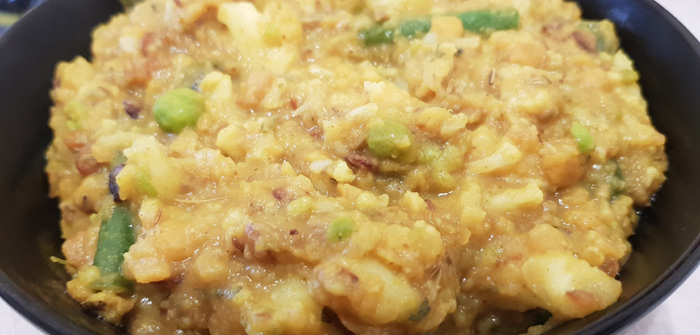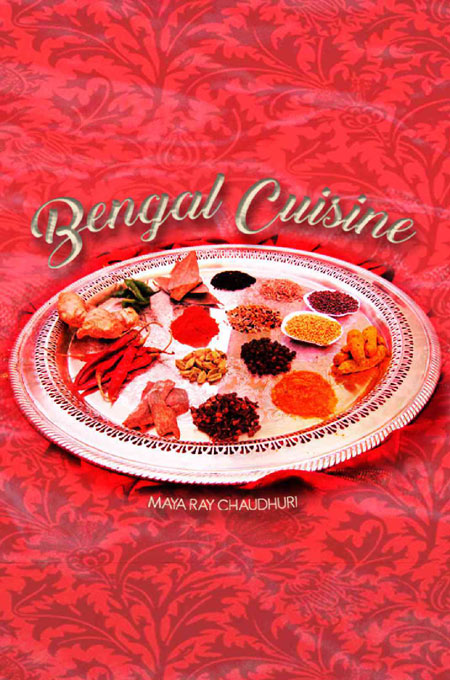Chaudhuri’s pint-sized recipe book attempts to introduce Bengali Hindu cooking, making a distinction from the usual Indian fare found in cookbooks and restaurants.
Her recipes are straight forward and easy enough to follow but they don’t mention serving sizes nor the expected time needed to create each dish. Each page features a generic colour photo down the inner edge for design purposes, instead of showing the expected outcome of the recipe.
Across the 40 or so pages of the paperback edition, there’s a good variety of meals, from vegetarian to meat and fish dishes with a final page dedicated to staples for your cupboard. The ingredient lists sometimes requires prior knowledge or access to a search engine. Examples include Jeera (cumin) and Musur Dal (red lentils).
For the first time ever, I was unsuccessful with both recipes I tried. So much so, that I axed the idea of trying a third recipe even though I had already shopped for it. Of the two dishes I attempted, I threw one out. Both were a disappointment in look and taste and I would not try them again nor recommend them.
Looking through the book, there are very few herbs and spices in use, with turmeric and Jeera seeming to be the primary source of flavour. Turmeric doesn’t have a lot of flavour itself and, when competing against large serves, there’s not enough Jeera in use for its taste to come through.
I’m a great lover of Indian food generally and I’ve sampled Bengali food numerous times in the past to my great delight. One of the dishes I tried from this book tasted nothing like it, while the other just tasted of nothing.
Chicken Curry (page 23)
This is a tale of woe to oh! Not much went right making the Bengali chicken curry. The albino dish I ended up with looked nothing like the brown chicken dish expected. This is despite having halved the recommended amount of meat, and having sealed it in the pan as per the instructions. In the pot, the white chicken, plain yoghurt marinate, and potatoes not only sapped the curry of colour, but drowned it in enough juice to call it a soup.
Thankfully the garam masala came to the rescue, giving the dish some flavour, which was more than I was expecting from the washed-out look of it. Even with half the meat, there was no other taste coming through from the Jeera (cumin), ginger, garlic and tomatoes, so each of these ingredients probably need to be increased significantly in the recipe. Overall, this was a disappointing effort on my part that looked inedible but tasted fine, so long as you don’t mind the single taste of garam masla. It’s not one I’d want to serve up to others.
Mung Dal with Vegetables (page 17)
Another disaster in the making, the pot was regularly running out of water at every step. The dahl needed much more water than the recipe dictated, as did the vegetables and, with a teaspoon each of cumin and turmeric being the only real spices to add flavour to the dahl and cauliflower, the result was one of the blandest dishes I’ve ever cooked. I threw in extra cumin, more salt, then added fennel, tarragon and other random spices, testing along the way just to give it taste. In the end, I threw out the dish and counted my loses.
Reviewed by Rod Lewis
Twitter: @StrtegicRetweet
Rating out of 10: 3
Distributed by: Austin Macauley UK
Released: 2016
RRP: £6.29 paperback, £10.49 hardback, £3.50 eBook























